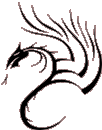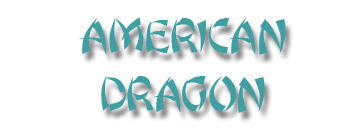POINT: DU-20 (GOVERNING VESSEL-20)
| English: | Hundred Meetings |
| Also Known As: | Hundred Convergences |
- On the midline of the head, halfway between the frontal hairline and the vertex of the external occipital protuberance.
- At the intersection of the median line at the vertex of the head with a line drawn from the tip of one ear to the other.
- On the midline of the head, 5 cun above the midpoint of the anterior hairline, approximately on the midpoint of the line connecting the apexes of both ears.
- At the vertex on the midline, in the depression 5 cun posterior to the anterior hairline and 7 cun superior to the posterior hairline. This point may also be measured as 8 cun posterior to the glabella and 6 cun superior to the external occipital protuberance.
- At the vertex of the head, in a depression in the midline of the cranium on the line which joins the tip of one ear to the other. This point is 7 cun above the posterior hairline and 5 cun above the anterior hairline.
- Transverse insertion either front to back or left to right, 0.5 to 1 cun. Sensation: local distention and pain.
- Caution: extreme care should be taken when using the point on infants, whose fontanels have not completely closed or patients with hydrocephalus.
- Puncture subcutaneously 0.3 to 0.5 inch.
- Moxibustion is applicable.
- Sea of Marrow point
- Intersecting point of the Bladder channel with the DU channel
- Meeting point of all the Yang channels
- Meeting point of the Bladder, Gall Bladder, San Jiao and Liver channels
- Benefits the brain
- Benefits the sense organs
- Nourishes the Sea of Marrow
- Clears the brain
- Calms the Shen
- Revives consciousness
- Spreads Liver Qi
- Subdues Liver Yang
- Extinguishes Liver Wind
- Subdues Yang
- Raises Yang
- Dispels Wind
- Tonifies Yang
- Warms the Yang
- Restores collapsed Yang
- Stabilizes ascending Yang
- Stabilizes the lower orifices
- Counters prolapse
- Regulates Qi
- Tonifies Qi
- Calms the fetus
- Lifts the Spirit
- Strengthens the ascending function of the Spleen
- Promotes resuscitation
- Stabilizes the ascending Yang
|
|
Promotes resuscitation Shock |
Type B infectious encephalitis |
Headache |
DU-1 or REN-15 |
DU-22 or GB-21 |
|
Anal prolapse |
Uterine prolapse |
Somnolence |
DU-18 |
||
Fright palpitations |
Agitation of the Heart |
Mania |
DU-26 |
or GB-43 |
|
Tendency to excessive crying |
Wind epilepsy Upward staring eyes |
Head Wind |
DU-21 |
||
One-sided or generalized head Wind |
Pain in the head and eyes |
Pain in the head and nape |
DU-26 |
LIV-3 |
SI-19 |
Lockjaw following Windstroke |
Most types of acute throat pain (needle DU-20 Baihui first) |
Tinnitus |
DU-23 |
UB-9 |
REN-15 |
Obstruction of the nose with inability to distinguish the fragrant from the foul |
Nasal congestion |
Dysenteric disorder Rectal prolapse in children (moxa DU-20 Baihui first) |
DU-1 |
UB-25 or REN-8 |
M-UE-29 |
Rectal prolapse in children |
Rectal prolapse |
Rectal prolapse with hemorrhoids |
- Do not use moxa if the patient suffers from high Blood pressure.
- This point can tonify when a person is fragmented but not acute.
- This point is considered to be the upper Dan Tian.
- This point may be bled to treat severe Excess conditions.
- It may be treated with moxibustion for Deficiency conditions.
- It calms and relaxes.

